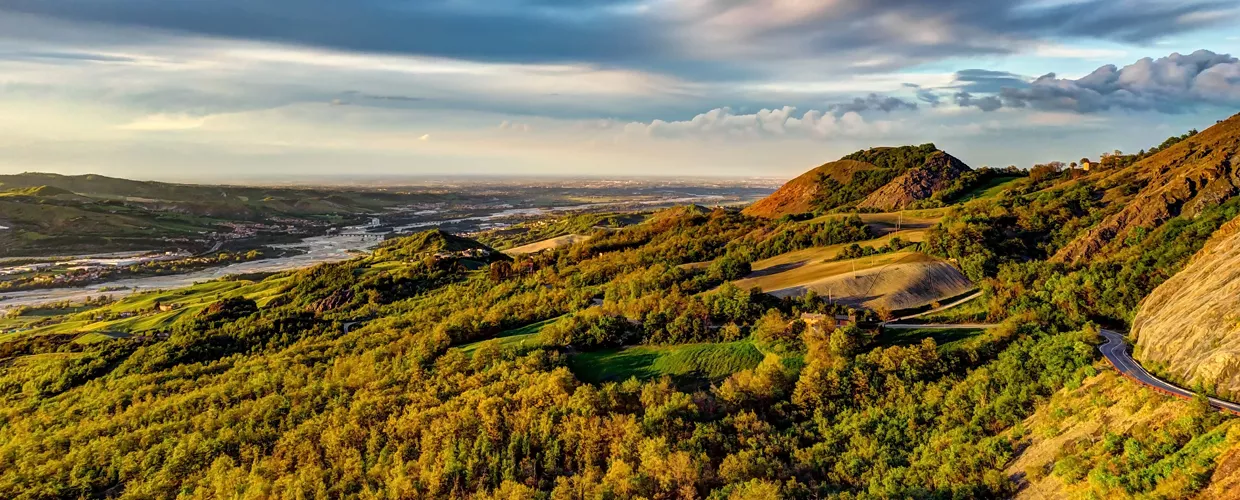
Overview
At the Taro river Park, a natural oasis between art and history
A Sunday at the Bird Park. We are in the small but magnificent natural oasis of the Taro River Park located between Fornovo di Taro, the ancient medieval village 20 kilometres from Parma, and the Bridge over the Taro, built more than two centuries ago by the Duchess of Parma, Piacenza and Guastalla Maria Luisa of Habsburg-Lorraine.
A region of great scenic beauty, which also deserves a visit for the richness of the history, art and traditions it holds.
Fornovo di Taro, land of battles
The name of the town of Fornovo di Taro, in the hills of the Lower Taro Valley, is historically linked to two battles: the Battle of Fornovo fought in 1495 between the army of the Italian League and that of Charles VIII, and the Sacca di Fornovo, which took place several centuries later, between 24 and 29 April 1945. That was the last pitched battle of the Second World War in the Italian campaign.
The Romanesque parish church and the never-castle
In the centre of the town, which stands on the banks of the impetuous Taro River, a tributary of the Po, make sure to pay a visit to the Pieve di Santa Maria Assunta, built in the Romanesque style and a place of great charm. The façade is decorated with 13th-century sculptures undoubtedly influenced by the school of Benedetto Antelami, possibly from an ancient pulpit, among which was probably the precious slab of St Margaret, now included in the high altar. A niche next to the portal encloses a headless sculpture of a pilgrim holding a heavy basket: it served as a 'road sign' to signal to medieval pilgrims on the Via Francigena that they were on the right path.
On top of a hill on the outskirts of Fornovo is Villa Carona, also known as the Castle of Fornovo, because it was built on the remains of the ancient castle that the Rossi family had built to fortify the village of Fornovo against the Guelphs. In 1495, during the Battle of Fornovo, the castle was set on fire by Swiss troops allied to the French King Charles VIII. In 1666, what remained was ceded to the municipality of Parma, which left it in a state of neglect. In the 18th century, the Jesuits built a sumptuous villa with a large, lush garden on the remains of the castle, which became the Maria Luigia National Boarding School. Nothing is left of the castle and the villa is undergoing a major redevelopment project.
The monumental Maria Luisa Bridge
A 570 metres long and 9 metres wide bridge, which stands at Ponte Taro and connects the east and west banks of the Taro river, was the longest in Europe at the end of its construction in 1820. Situated along the Via Emilia, the bridge designed by Antonio Cocconcelli, an engineer at the court of the Duchess of Parma, Piacenza and Guastalla, consists of brickwork with 20 'skene' arches, i.e. arches whose height is less than half the width. On either side of the bridge four marble statues by Giuseppe Carra, depicting the personifications of the main tributaries of the Po in the Duchy of Parma: the Parma, the Taro, the Enza and the Stirone rivers.
The bridge was one of the first infrastructures built by the duchess: the chronicles of the time narrate that, when laying the foundation stone at the inauguration, Maria Luisa handed over a dowry of 250 lire to 25 destitute girls drawn by lot. For years, the bridge over the Taro, which for many decades bore the entire vehicular flow of the Via Emilia, has been undergoing an ambitious renovation project.
A paradise for mountain bikers and birdwatchers
In addition to the magnificent vestiges of yesteryear, the Taro River Park, which can be reached by car, bicycle or bus, offers an immersive experience in nature and tranquillity: this extraordinary natural corridor between Fornovo and Ponte Taro is an important migration route and nesting site for various species of birds, an ideal place for easy hikes, cycling and mountain biking trails and birdwatching.
On the lookout for ceps.
You have to know that this is the realm of the porcino mushroom (cep): recognised with the quality mark PGI, Protected Geographical Indication, the porcino mushroom is the pride of the local gastronomic tradition. Here you will find it in excellent risottos, in the sauce that accompanies polenta or tagliatelle, sautéed or fried, while in spring you can try another prized local variety: the blackthorn mushroom, which with its unique and intense aroma enhances the flavour of many first courses.